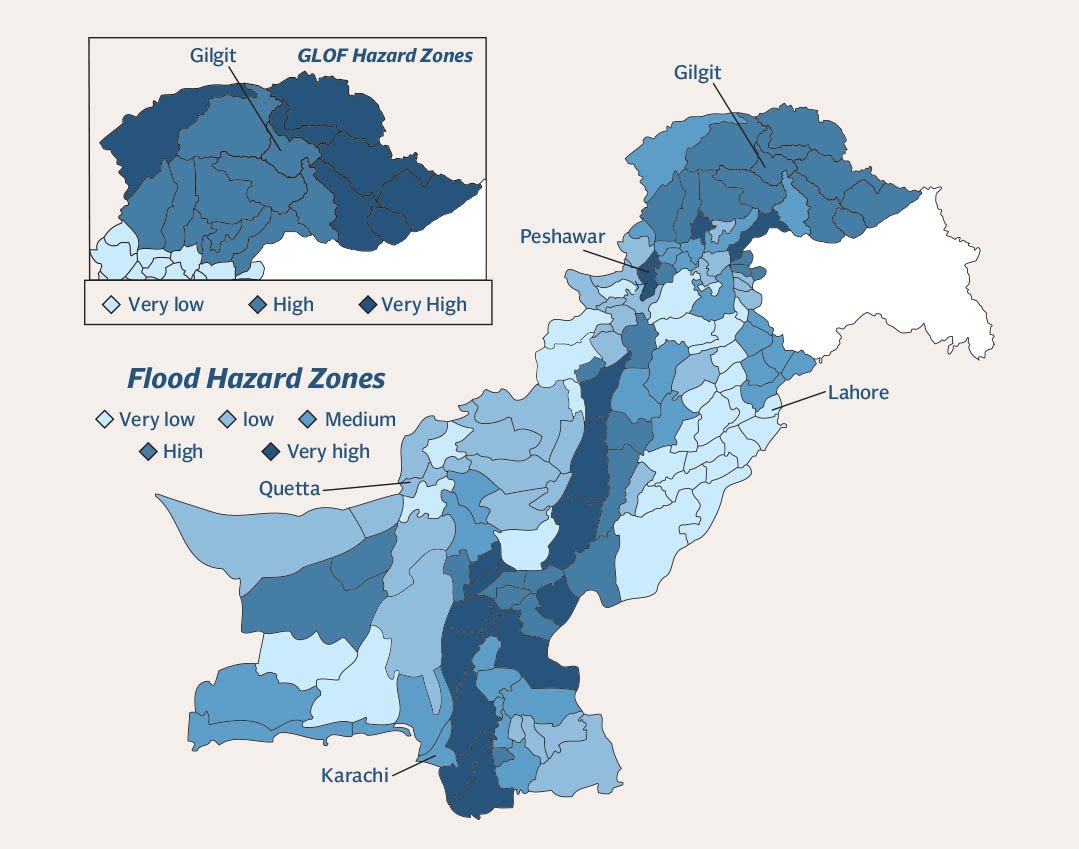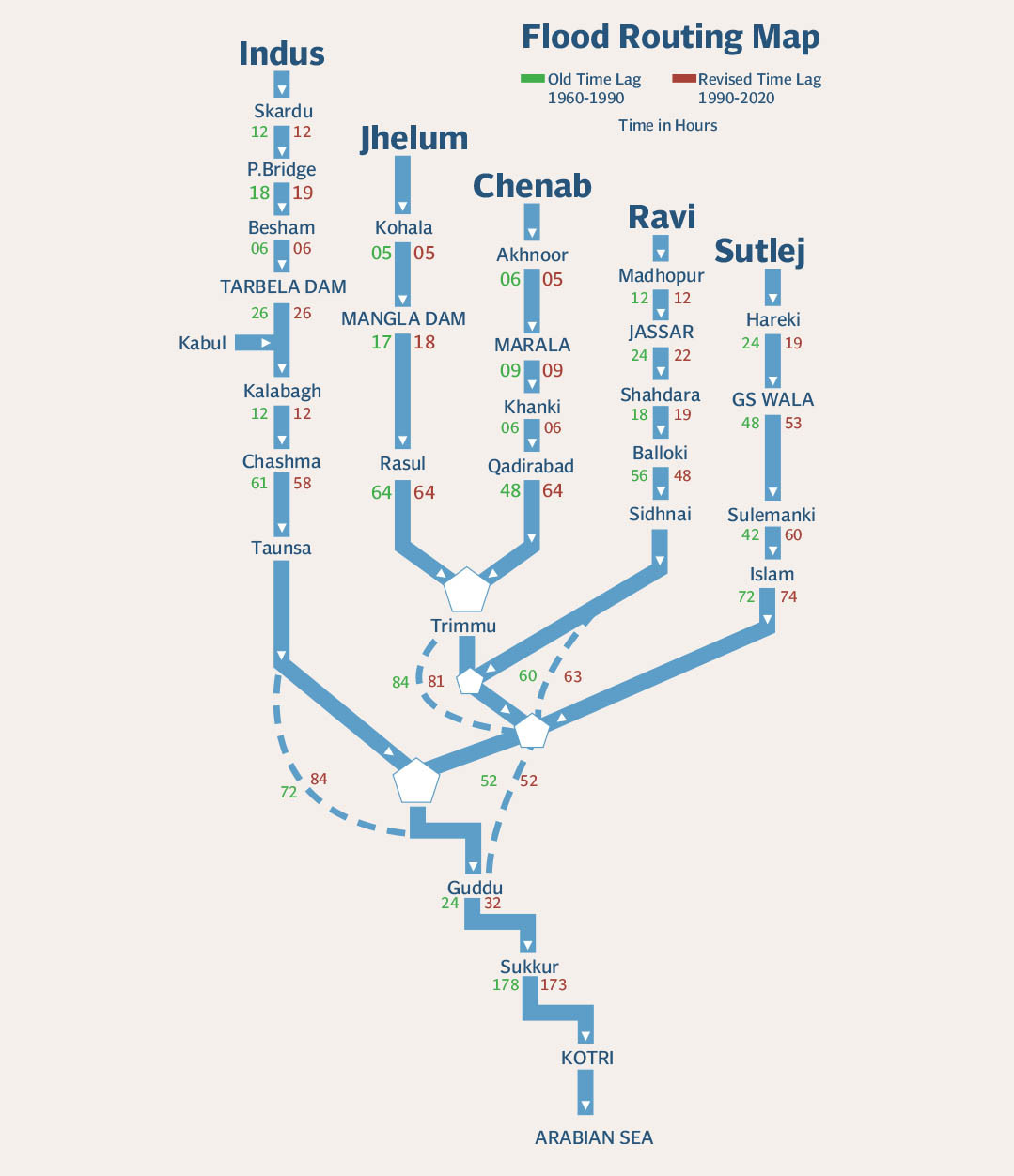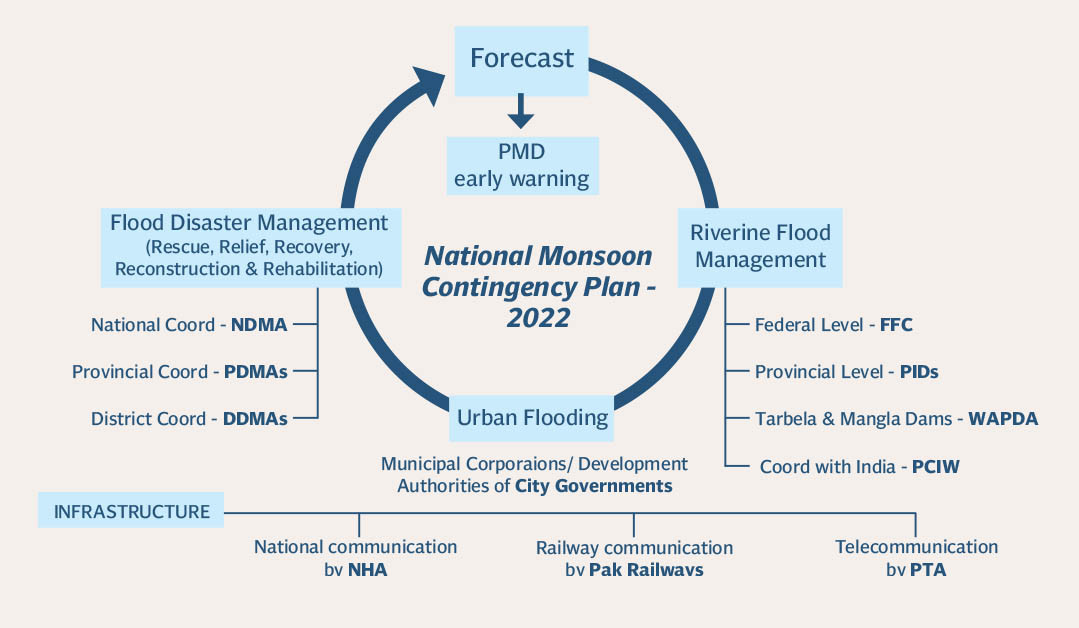Forty-year-old Naik Mohammad, was lucky to have quickly decided to leave his village along with his wife and four young children just before floods recently hit his quarter in jary village of Fatehpur Tehsil, Khwazakhela, in Swat. The next day when he went to visit his house and property, he was shocked when he discovered his house had washed away and his cultivating land had disappeared, all a result of land sliding. Soon he understood from stillness in the area that the whole village had been evacuated. It was the second time after 2010 that floods had caused damages in the village. As Naik retold the story of losses, his voice became strangled at most points. “I have had to permanently abandon my ancestral quarter as it is no safer for living,” he said.
We have witnessed human stories more worrisome than the case of Naik Mohammad. Many adults and children have lost their lives and livestock and property losses have been suffered by thousands. These damages are not limited to northern part of the country. In the last few years, floods have wreaked havoc in northern, southern, eastern and western parts of the country. Currently, one-third of Pakistan is under flood water. Pakistan’s economic losses because of floods this year has exceeded $30 billion. Moreover, according to a UN report, 33 million people have been displaced, 1,300 have died and 1460 health centres were also damaged, from which 432 were fully wrecked. In some cases, the floods caused entire villages to wash away.
Unfortunately, in such a serious situation self-suggested and sometime politically motivated solutions are being propagated with no scientific validity or practicalities. Despite the widely spread rhetoric on the floods being the sole cause of climate change, this is not entirely true. According to WWF Flood Risk Consultant and Water Scientist Muhammad Abdullah, as far as flood-related damages are concerned, this is do more with management and planning rather than climate change.
Citing the water management system in Netherlands, he said that it is a good example as they stopped flooding by using water reservoir for improving water table under the soil.
Netherlands is a country that always faces threat of floods both from rivers as well as the seaside. To protect the country, the Dutch have built many dikes, barriers, and pumps. The case of Netherlands and several other developed countries prove that floods could be avoided by better water management and adjusting water-channels coupled with better planning. “Several countries in the world are now following model of Netherlands, for avoiding floods or its damages in their country,” Abdullah said.
In case of Pakistan and its precarious situation, experts advocate that controlling floods and its damages needs a change in policy at the strategic level. Major portion of this proposed policy is that the internal measures are exclusively in control of Pakistan. And in this way floods and damages are manageable. A small portion of the policy is related to climate change that would be discussed later shortly.

Some of the experts even don’t treat floods as calamity as it is a natural phenomenon and damages occur mere due to mismanagement. Several countries in the world have successfully managed to avoid some of the more dangerous effects of floods.
Pakistani experts maintain that Pakistan can learn from developed countries’ experiences in controlling floods or at least diminishing its damages. Most of these countries have maps of water channels and expected floods for 200 years. But in Pakistan the government have no such scientifically valid data. As a general principle of management, before a solution measuring parameters of the problems is essential. And that is why that experts stress in-depth research for long term solution and making a flood related map based on scientific evidences.
Analysts said that if one calculate losses in the last 75 years, it is more than the flood-related assistance if it get any. The cost of comprehensive research would be less than the losses that Pakistan have to bear every year and it would definitely contribute to controlling losses, the analysts maintain. “What we need is grants for research instead of aid,” Abdullah said. “Our research in this sector is so weak that we have not yet explored all glaciers in the country.”
The second most important step that environmentalists advise is research-based clear cut policy on environment and floods. Pakistan lacks a comprehensive policy in this connection.
“What we do is that we asses risk, losses, and provide some assistance or evacuation, it is like we wait for what has to be happen, and once it happens we do a little bit,” a government official said on condition of anonymity. “Evacuation every year is no solution even.”
Some of the experts even objected seven or eight institutions dealing with floods like NDMA, Federal Flood commission, Ministry of Water and Power and others. This shows some confusion at the policy-level and in flood-related disaster management.
The problem in the country is even deeper as this is not only lack of strong policy that multiply the issues. Most worrisome is that existing laws and protocols are being violated; pulling down of a hotel, a portion of which was built in Swat river, by flood-water is a recent evidence. No body is ready to take responsibility for issuing NOC for such an illegal construction.
According to architect and Associate Professor National College of Arts, Lahore Zahid Usman, all by-laws of buildings and its codes are violated. Usman says that officials at the Tehsil-level are responsible for designs, approval and feasibilities at the village level, but the problem is that they lack professional knowledge and skills for such a task, and then implementing rules and regulation is another problem.

Legal expert on Climate Change Sara Hayat explains that encroachment should be stopped immediately and people must not be allowed to carry out construction in river belts. Moreover, poor development should immediately come to halt. Abdullah urged to ban construction within three km of small rivers and six km of big rivers like Indus.
In the emerging situation revising the by-laws and code is also being stressed. Experts say that a policy envisaging, environment, building code, town planning, water management, disaster management and other related factors is needed on an urgent basis to stop such a calamity from occurring in the future.
One of the serious problem that emerges from unavailability of research-based data is that some serious people do oversimplification of the problem by suggesting constructing more and more dams for stopping floods. They even seem to be unaware of the fact that instances in other countries prove otherwise and mere by building dams, floods can never be avoided rather, as experts propagate, in some cases such steps becomes dangerous. The USA has recently made several dams defunct in the country. Instead as mentioned above by a water scientist, the Netherlands model proves that better water management and redirecting water channels on specific points could improve the situation.
Most importantly, scientists have said that developed countries have maps of water-course or floods for 200 years to have better management. They manage it wherever possible and made laws facilitating safety in particular areas. Building dikes and barriers could slow down speed of water-flow that naturally limits losses. “We had natural barriers, particularly in Swat and northern parts of the country in form of forests and trees but now its number is on decrease in towns and forests are disappearing,” said Head of Environmental Sciences Quid-e-Azam University Dr Sohail. He suggested steps for more and more forestation in different areas besides building artificial barriers.
Floods management is easier than coping with climate change, a much wider area with international implications. Certain analysts maintain that the prolonged monsoon and torrential rains may be an initial effect of global warming. But tackling this aspect would need international cooperation and no country alone can control climate change. Reports suggest that western developed countries and China are responsible for 98 percent carbon emission but region like South Asia, with ignorable share in global carbon emission but is being affected mostly. This region is said to be in frontline as far as climate change are concerned.

Yet for overall effect working with the regional countries is vital. But doing so is not an easy task keeping in view the economic and socio-political challenges. It is an open secret as what happened to SAARC and other cooperative activities in South Asia due to tension between nuclear-armed Pakistan and India. The attitude of political leadership in India and hawks in the two countries is a serious issue that has barred development in the region.
Musharraf Zahoor, a researcher on security issues, said that despite all challenges rays of hope still exist. “All the regional countries including India are facing worst effect of global warming and floods are playing havoc in all the regional countries,” he says.
According to well-known analyst on security issues Dr Riffat Hussain, the two countries finally have no option but to cooperate in areas like climate change, otherwise consequences for them would be much dangerous than a heavy war. “Security of the two countries is in danger with far reaching effects on economy and human lives,” she says.
Certain analysts said that regional solution would take time as it needs political will, not visible in the region until now and therefore they suggest alternative options.
Ms Hayat maintained that once happened global warming could not be reversed any time soon and managing climate change at internal level is an immediate option that we can utilize. She suggested taking steps for protection of environment and strictly banning risky behaviour like populating areas that are under threat.
Does the Monsoon contingency plan work?
The dangerous monsoon this year caused enhanced damages in a wider area of Pakistan as crucial parts of Moon Contingency Plan 2022 remained unimplemented that caused floods damages unprecedented in the history of the country. River ordinance or act, action against encroachment, de-silting of Nullahs were areas that were identified as essential for controlling damages during monsoon floods. For implementation of the crucial plan different departments and provinces were alerted too. But on the ground situation tells a different story.
A senior official at Ministry of Climate change, on condition of anonymity, said that in Balochistan and Sindh barriers were erected in certain channels by locals to protect crops that caused dumping of water in wide areas and that multiplied sufferings and caused irregular floods. Even in urban areas, de-silting of nullahs was not carried out let alone the rural areas where implementation of law and plans most of the time remain just a paper work. “In certain areas barriers in water channel was created in Swat as well,” said Rahim Dad, a resident of Kalam in Swat. A viral video about a demolishing hotel in Swat clearly shows violation of River Ordinance, another important section of the plan.
While the environment-related parts of the plan are also being violated on daily bases in almost all areas of the country like dumping of solid waste and plastics in nullahs. Besides, there is lack of coordination and preparation among different relevant institutions as NDMA can advise to the provinces but then budgeting and implementation is responsibility of the federating units, this creates an issue and affect coordination, said legal expert on environment Rafay Alam. He said that after 18th amendment, environment is a provincial subject and addressing this aspect of affairs is vital for addressing the problems like floods in the long-run.

In addition, experts say that Pakistan early warning system lack modern technologies that sometime causes accuracy issues though after climate change risk of inaccuracy could be phenomenon across the region and the world as a whole. Environmentalist Dr Ejaz explained that it was forecasted that this time enhanced rainfall and more than the previous monsoon would take place, but it was actually much more than that was forecasted.
No doubt prolonged rainfall could be a common phenomenon in the era of climate change, however, this time, the monsoons in Pakistan were not simply that, analysts say. A senior official in National Disaster Management Authority who was not allowed to speak to media told The Express Tribune on condition of anonymity that in some areas of the country rain showered water 400 and 600 times more than that was forecasted. “We were expecting, 30 times additional rainfall this season,” the official said. The whole scenario shows that preparation was not complete based on the available faulty data that in fact proved false exposing limitations of the current forecasting system.
Despite, all the difficulties and limitation, certain observers have said that the relief and rescue operation was not that bad even in the worst conditions, though certain areas faced issues due to delayed actions. “If you compare the 2022’s death toll during floods with that of 2010, you will realise that the scale of affected people is large and wrecked areas is much wider this year but life loss is less than the figures 12 years ago, and it shows our preparedness and effectiveness in relief operation,” the NDMA official said.
However, Alam doesn’t fully agree with the official version saying the amount of tents and medicines reveals the preparedness for floods, even portable water is not available to prevent epidemics and flood related diseases.
